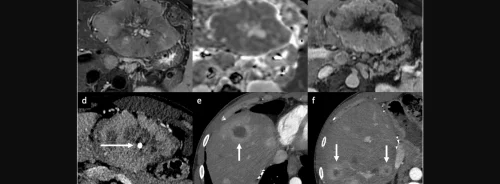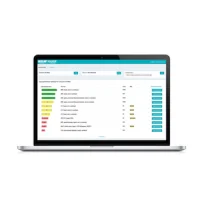Managing change is a challenge, with a high probability of failure if not properly implemented. Change management is a well-established and structured discipline in the business world, which offers many toolsets that can be easily translated to the radiology world to effectively manage change, says an article published by the journal Current Problems in Diagnostic Radiology.
Changes in radiology can be seen either in technology, policy, process or strategy. Some changes are initiated voluntarily but other changes are forced because of larger governmental or policy changes on a national or international level. Some examples of changes that are encountered in radiology include changes in healthcare systems, insurance, reimbursements; new leadership and culture; changes in imaging hardware and software; practice-changes based on new evidence and guidelines; etc.
"There are several well-established models of change management in the business world, which can be effectively used in radiology. One model which is well-suited to healthcare and radiology is Prosci's Awareness, Desire, Knowledge, Ability and Reinforcement model (ADKAR model), a goal-oriented model that allows teams to focus on specific results," write article authors Prabhakar Rajiah, MD, Department of Radiology, UT Southwestern Medical Center (Dallas, TX) and Puneet Bhargava, MD, Department of Radiology, School of Medicine, University of Washington (Seattle, WA).
The first and foremost step in change management is to thoroughly understand the nature of the change itself and the need for it, the authors say. Although change is intimidating it is also often necessary. For example, national laws such as the affordable healthcare act, national level policy changes such as reimbursement or incentive payments or national level curriculum and board examination changes are issues over which an individual or radiology department has minimal control. However, these necessitate major changes in the radiology department as well to be compliant with the new requirements or regulations, Drs. Rajiah and Bhargava explain.
They note that effective change management takes into account all the factors and people involved, best illustrated by Prosci's methodology. First, an appropriate strategy is selected. This should be simple, practical, logical, structured, comprehensive, easy to understand, implement, and communicate. "It is also absolutely vital to select an appropriate team," the authors write. "The selection of appropriate structure and team largely depends on how they fit in with the existing resources, values, and processes."
The leadership and management responsible for the change should ensure that everything is implemented the way it was planned. Note that the success of change management ultimately depends on the individual, according to the article. Hence, it helps to understand how an individual would respond to change, particularly a change that they are not comfortable with. "This response has been considered analogous to bereavement, explained by Kubler Ross in five stages, including denial, anger, depression, bargaining, and finally acceptance,” Drs. Rajiah and Bhargava point out. "However, not all change is bad and the response does not always go through these stages."
Once the change is implemented, it should be monitored with a feedback process to ensure that the change is effective. The steering committee should meet regularly to evaluate the feedback, assess if the process is successful, identify challenges, and design alternative pathways.
Celebrating success encourages those who went through the change process and is an important component of change management.
"Occasionally, change may take years to achieve, and in such a situation it is important to create short-term goals and wins. Leadership should establish clear short-term performance improvement goals within the framework of change and celebrate success by rewards, events promotion, or bonuses. This will reinforce to the employees that progress is being made toward the larger goal and make sure that the levels or urgency and momentum do not fall off," according to Drs. Rajiah and Bhargava.
Source: Current Problems in Diagnostic Radiology
Image Credit: Pixabay
References:
Rajiah, Prabhakaar et al. (2017) Change Management - A Radiology Administrator׳s Primer. Current Problems in Diagnostic Radiology. doi.org/10.1067/j.cpradiol.2017.06.010
Latest Articles
Radiology, change, change management
Managing change is a challenge, with a high probability of failure if not properly implemented. Change management is a well-established and structured discipline in the business world, which offers many toolsets that can be easily translated to the radiol










